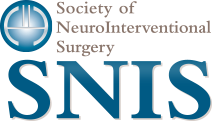Noticias


- Título: New Study Data Shows That Written Emergency Stroke Care Protocols May Improve Hospital Performance
- Fecha: 01-08-2014
COLORADO SPRINGS, Colo., Aug. 1, 2014 /PRNewswire-USNewswire/ -- New data from Vanderbilt University Medical Center (VUMC) helps prove that written care protocols can significantly improve the overall emergency care pathway for stroke, the nation's fourth leading cause of death in the US. The findings were announced this week at the Society of NeuroInterventional Surgery (SNIS) 11th Annual Meeting in Colorado Springs, CO.
Over the last decade, an accumulation of evidence has affirmed that, for stroke, reducing the time that elapses from patient presentation to treatment is critical to procedural success and improved patient outcomes. Accordingly, the Joint Commission on Accreditation of Healthcare Organizations (JCAHO), the regulating agency that certifies Primary and Comprehensive Stroke Centers, requires that these institutions establish written care protocols to guide performance in the emergency care of acute ischemic stroke.
This study details a 2012 initiative by VUMC, an Advanced Certification Comprehensive Stroke Center, to significantly revise its stroke care protocol. "Our ultimate goal was to develop an enhanced protocol that eliminates variability in our process, streamlines care to achieve necessary efficiencies, and improves time delays to improve the potential for better patient outcomes," said J. Mocco, MD, Associate Professor of Neurosurgery at Vanderbilt University Medical Center.
The new protocol specifies three phases of activities involved in patient assessment and treatment decisions, as well as corresponding communication to relevant physicians at every phase. Specific measurements that map to the three phases include: time from patient arrival to CT scanning; time from patient arrival to neurology evaluation of diagnostics; and time from patient arrival to treatment with Intravenous tissue Plasminogin Activator (IV tPA). Data was obtained over four separate three-month time periods pre- and post-protocol for comparison (pre-implementation of protocol: January – March 2012, and post-implementation of protocol: August – October, 2012; January – March, 2013; and September – November, 2013). "These categories had been measured as part of our original protocol," continued Mocco, "however, we saw an opportunity to focus attention on some of the sub-processes within each that typically don't command attention, but, if addressed, could make a meaningful difference in quality improvement and the overall result."
Post-implementation of the protocol, an analysis across all categories showed notable progress, with average time from patient arrival to CT scanning decreasing from 40.4 to 13 minutes; average time from patient arrival to neurology evaluation of diagnostics decreasing from 34.3 to 8.3 minutes; and average time from patient arrival to IV tPA treatment decreasing from 67.6 to 46.5 minutes. The latter means that VUMC has successfully met the JCAHO-stipulated metric of 60 minutes for "patient arrival to IV tPA."
"The success of this new protocol can truly be attributed to a multi-disciplinary effort on the part of all of our physicians and other clinicians who work within the always complex and dynamic environment of emergency stroke care with ever-changing variables, all for the purpose of providing the best care for our stroke patients," said Scott Zuckerman, a senior neurosurgery resident who helped plan and lead the implementation of the protocol.
When reflecting on the implications of the study, Mocco added, "First and foremost, it illustrates the value of customized written protocols that consider all of the nuances associated with any one hospital's emergency stroke care process. Ours is certainly not a one-size fits all solution. Every stroke center has to tailor its protocols to it own culture and resources. But, ultimately, we hope our experience will be of benefit to other stroke centers that are considering or just beginning a written protocol initiative to fulfill their mission of offering the highest standard of stroke care to their patients."
About SNIS:
Founded in 1992, the Society of NeuroInterventional Surgery (SNIS) is represented by physicians who specialize in minimally invasive techniques to treat neurovascular conditions, including stroke, aneurysms, carotid stenosis and spinal abnormalities. Drawing on diverse backgrounds and expertise including interventional neuroradiology, neurosurgery and neurology, these physicians are continuing to forge new pathways in the development of the distinct specialty of neurointervention. Over the past two decades, practitioners of this field have paved the way for the scientific research and study that has resulted in new technology and revolutionary treatment approaches that have transformed the neurosciences. In keeping with the mission of SNIS, the society remains committed to working in partnership to advance the science and medical environment that will result in enhanced quality of care for patients across the globe. www.snisonline.org. Follow us on Twitter @SNISinfo.SOURCE Society of NeuroInterventional Surgery
- Fuente: endovascular.es





